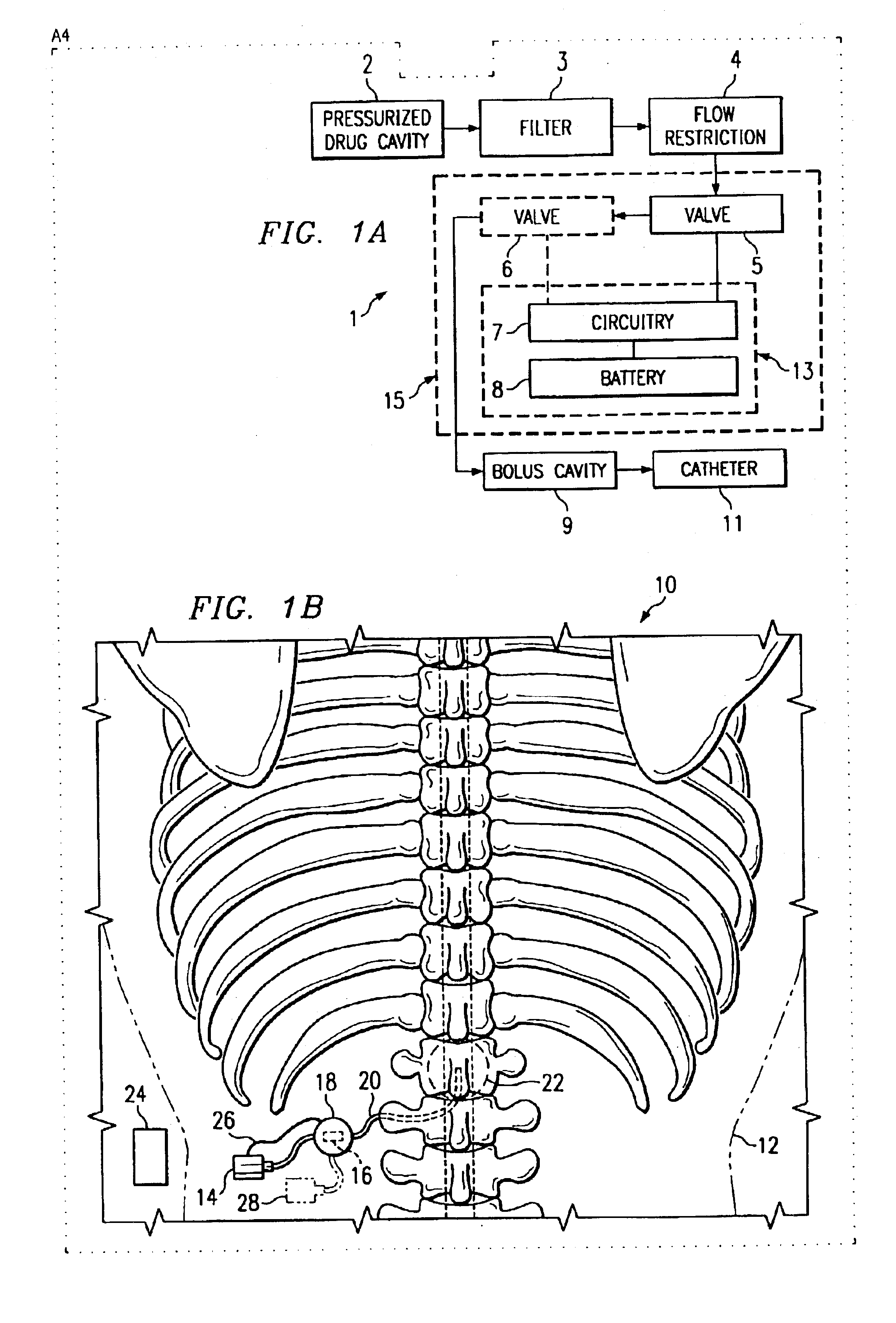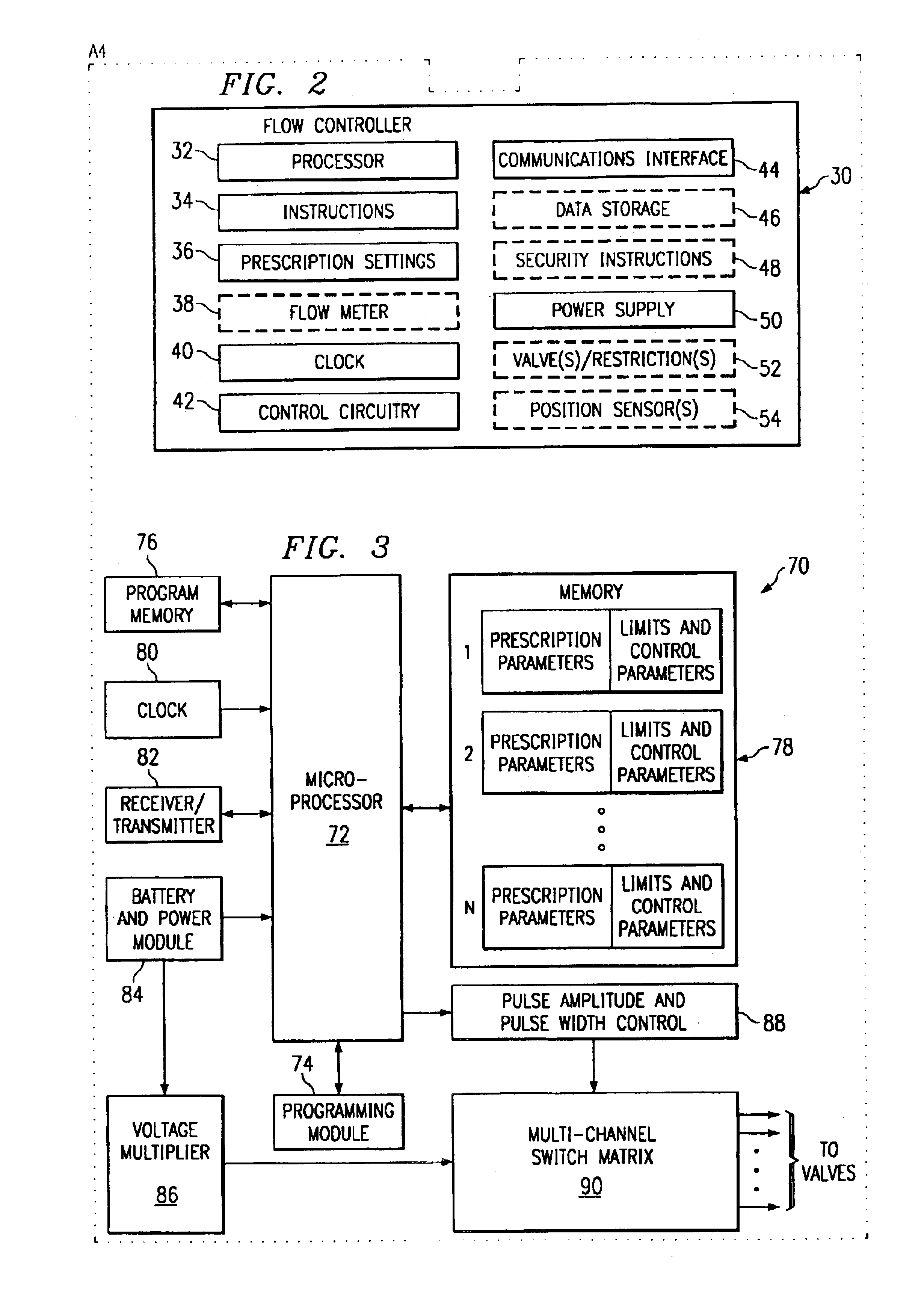Apparatus for dosage control
a technology of dosage control and apparatus, applied in the direction of process and machine control, positive displacement liquid engine, instruments, etc., can solve the problems of encumbering clothing selection, unobtrusive cumbersome and inconvenient installation,
- Summary
- Abstract
- Description
- Claims
- Application Information
AI Technical Summary
Benefits of technology
Problems solved by technology
Method used
Image
Examples
embodiment 1
[0037]Such a delivery pattern is realized with a separate dose control system. FIG. 1A depicts an embodiment 1 of the present invention. A pressurized drug cavity 2 delivers a treatment solution through a filter 3 and flow restriction 4 to valves 5 and 6. However, various motivating systems may be envisaged for supplying valves 5 and 6 with treatment solutions. The circuitry 7 using energy from battery 8 manipulates the valves 5 and 6 to produce a flow rate in accordance with a prescription. However, one, two, or more valves may be used. The treatment solution may then travel through a catheter 11 to a treatment region in a patient. A bolus cavity 9 may be located inline to provide for the administering of bolus dosages.
[0038]The circuitry 7 and battery 8 comprise a dose control module and may be located separate from other elements as denoted by the enclosure 13. However, other elements such as the valves 5 and 6 may be included with the circuitry 7 and battery 8 as indicated by th...
embodiment 10
[0040]FIG. 1B shows another embodiment 10 of the present invention. FIG. 1B has an infusion pump 14 implanted in a patient 12. From the infusion pump, a catheter 20 leads through a dose control module 18 to a treatment area 22. The dose control module 18 may have a valve set 16 or other means of directing dosage. Alternately, the dose control module 18 may have a communication link 26 with the infusion pump 14 or valve set that aids in controlling dose. The system may also include an external patient control unit 24. The external patient control unit may direct the dose control module 18 to change dose rates or prescription configurations. In addition, other infusion pumps 28 may be connected with the dose control module 18 or valve set 16 such that multiple pharmaceutical solutions are delivered through the catheter 20 to the treatment area 22.
[0041]The system may be useful in treating various ailments. For example, the treatment area 22 may be intraspinal. The infusion pump 14 may...
PUM
 Login to View More
Login to View More Abstract
Description
Claims
Application Information
 Login to View More
Login to View More - R&D
- Intellectual Property
- Life Sciences
- Materials
- Tech Scout
- Unparalleled Data Quality
- Higher Quality Content
- 60% Fewer Hallucinations
Browse by: Latest US Patents, China's latest patents, Technical Efficacy Thesaurus, Application Domain, Technology Topic, Popular Technical Reports.
© 2025 PatSnap. All rights reserved.Legal|Privacy policy|Modern Slavery Act Transparency Statement|Sitemap|About US| Contact US: help@patsnap.com



